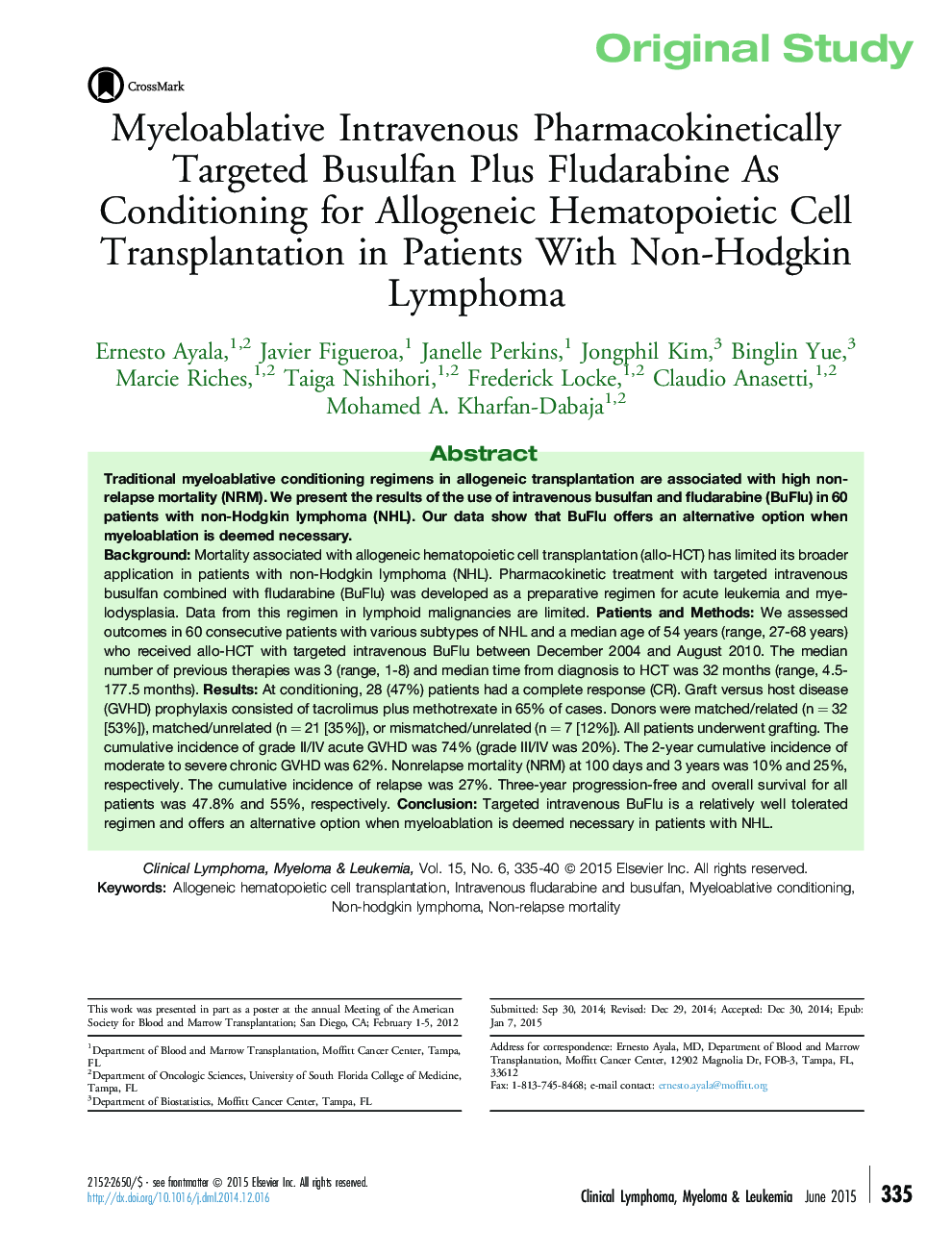| Article ID | Journal | Published Year | Pages | File Type |
|---|---|---|---|---|
| 2754238 | Clinical Lymphoma Myeloma and Leukemia | 2015 | 6 Pages |
BackgroundMortality associated with allogeneic hematopoietic cell transplantation (allo-HCT) has limited its broader application in patients with non-Hodgkin lymphoma (NHL). Pharmacokinetic treatment with targeted intravenous busulfan combined with fludarabine (BuFlu) was developed as a preparative regimen for acute leukemia and myelodysplasia. Data from this regimen in lymphoid malignancies are limited.Patients and MethodsWe assessed outcomes in 60 consecutive patients with various subtypes of NHL and a median age of 54 years (range, 27-68 years) who received allo-HCT with targeted intravenous BuFlu between December 2004 and August 2010. The median number of previous therapies was 3 (range, 1-8) and median time from diagnosis to HCT was 32 months (range, 4.5-177.5 months).ResultsAt conditioning, 28 (47%) patients had a complete response (CR). Graft versus host disease (GVHD) prophylaxis consisted of tacrolimus plus methotrexate in 65% of cases. Donors were matched/related (n = 32 [53%]), matched/unrelated (n = 21 [35%]), or mismatched/unrelated (n = 7 [12%]). All patients underwent grafting. The cumulative incidence of grade II/IV acute GVHD was 74% (grade III/IV was 20%). The 2-year cumulative incidence of moderate to severe chronic GVHD was 62%. Nonrelapse mortality (NRM) at 100 days and 3 years was 10% and 25%, respectively. The cumulative incidence of relapse was 27%. Three-year progression-free and overall survival for all patients was 47.8% and 55%, respectively.ConclusionTargeted intravenous BuFlu is a relatively well tolerated regimen and offers an alternative option when myeloablation is deemed necessary in patients with NHL.
